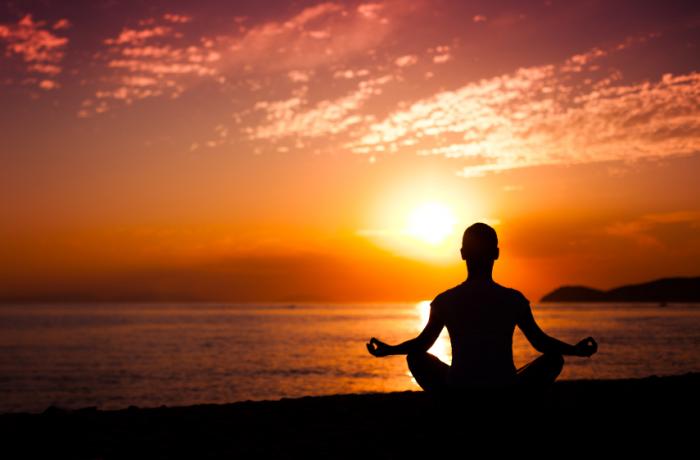How to Meditate? Essential Tips for Busy People
How to Meditate? Essential Tips for Busy People
Blog Article
How to Meditate: A Detailed Method to Getting Mindfulness and Tranquility
Meditation serves as a powerful tool for achieving mindfulness and emotional calm in a fast-paced world. By recognizing the essential concepts and techniques included in reflection, people can grow a technique that enhances their overall well-being.
Understanding Meditation
Understanding reflection entails grasping its fundamental principles and strategies, which act as the structure for the technique. At its core, reflection is a mental exercise focused on advertising leisure, constructing inner energy, and establishing compassion and insight. The technique urges people to focus their attention, frequently through techniques such as deep breathing, visualization, or concept rep.
Meditation can be categorized right into numerous styles, including mindfulness, transcendental, and loving-kindness reflection, each with unique functions and approaches. Mindfulness meditation stresses present-moment understanding and non-judgmental observation of ideas and sensations, while transcendental reflection involves the usage of certain rules to transcend common thought procedures. Loving-kindness meditation focuses on creating a mindset of love and compassion towards oneself and others.
Despite the strategy utilized, the key goal continues to be constant: to cultivate a much deeper understanding of the mind and its patterns. This self-awareness fosters psychological durability, clarity of idea, and a profound feeling of calm (How to meditate?). By recognizing these techniques and concepts, individuals lay the foundation for a successful reflection practice that can dramatically enhance their total well-being
Planning For Your Practice
Before starting your reflection technique, it is vital to develop a setting conducive to focus and relaxation. Ensure that the area is cost-free and tidy of clutter, as a tidy environment can assist remove the mind.
Take into consideration the lights, as natural light can enhance your mood and energy. Soft, warm lighting is typically a lot more relaxing than rough fluorescent lights. In addition, pick a comfy temperature level, guaranteeing that you are neither too hot nor too cold.
Incorporating elements that promote tranquility can further enhance your experience. This might consist of soft paddings or coverings for convenience, in addition to soothing fragrances from vital oils or incense. It can likewise be useful to have a timer set for your meditation session to stop distractions from clock-watching.
Basic Meditation Strategies

An additional effective method is body scan meditation. This includes emotionally scanning your body from head to toe, discovering any kind of locations of tension or discomfort and purposely relaxing those muscle mass. This method fosters a much deeper link between your mind and body.

Finally, loving-kindness meditation concentrates on growing empathy in the direction of on your own and others. Quietly repeat expressions of a good reputation, improving psychological health and interconnectedness. Each of these methods serves as a structure for your meditation trip, enabling you to find the approach that resonates best with your individual practice.
Maintaining Emphasis and Mindfulness

Developing a dedicated meditation space can enhance the ability to maintain mindfulness. A quiet, uncluttered environment minimizes interruptions, allowing for deeper immersion in the practice. Additionally, establishing a time frame can aid take care of assumptions; starting with shorter sessions may ease the change right into longer techniques.
Making use of methods such as body scanning or observing feelings can also bolster mindfulness. These methods urge experts view it to remain present and engaged with their physicality, securing their interest in the moment. Regular technique is crucial; the mind develops resilience with time, developing a more powerful capacity for emphasis.
Incorporating Reflection Into Every Day Life
Incorporating reflection right into every day life can change regular activities right into opportunities for mindfulness and self-reflection. By incorporating mindfulness practices right into usual jobs, people can cultivate a better feeling of existence and serenity in the middle of the numerous hours of daily life.
Begin by determining moments throughout your day where you can stop and practice mindfulness. During your early morning commute, focus on your breath or the experiences of the atmosphere around you. In the cooking area, technique food preparation as a reflective practice, relishing the textures, colors, and fragrances of the components. Also mundane tasks like cleaning meals or strolling can become chances for reflection by directing your interest to the experiences of movement and the noises bordering you.
In addition, setting aside specialized times for reflection can enhance its practice. Begin with brief sessions, progressively increasing duration as you end up being a lot more comfy. Usage reminders or cues-- like a particular time of day or a soothing audio-- to develop uniformity.
Eventually, the objective is to weave mindfulness right into the material of everyday life, enabling you to approach each moment with objective, thus enhancing your overall feeling of health and quality.
Verdict
In verdict, efficient meditation requires a silent setting, a comfy setting, and a concentrate on the breath. By allowing ideas to develop without judgment and constantly redirecting attention to the breath, practitioners can attain improved mindfulness and serenity. Integrating numerous methods, such as body scanning and loving-kindness phrases, can better enhance the practice. Normal reflection, even briefly sessions, promotes a deeper link to today minute, eventually leading to better calmness and psychological clearness in daily life.
Reflection can be categorized right into various designs, consisting of mindfulness, transcendental, and loving-kindness meditation, each with distinctive purposes and techniques. Mindfulness meditation highlights present-moment awareness and non-judgmental observation of ideas and feelings, while copyright includes the usage of specific rules to go beyond common idea processes.With your meditation area prepared, it's time check over here to discover various fundamental reflection techniques that can assist grow mindfulness and internal peace.Constantly discover here keeping emphasis and mindfulness during meditation can be difficult, specifically for those new to the method.Developing a dedicated meditation room can boost the ability to preserve mindfulness.
Report this page